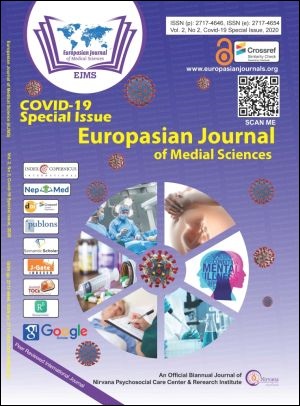Clinical and Epidemiological Features of Death with COVID-19 in Karnali Province of Nepal
Keywords:
COVID-19, Karnali Province, Epidemiology, Mortality due to COVID, COVID Mortality in Karnali Province, COVID Mortality in NepalAbstract
Background: Coronavirus disease (COVID-19) has rapidly spread to many countries and increased mortality worldwide. Most deaths were either elderly or have underlying medical problems and even young individuals have died from COVID-19. We sought to analyze the epidemiological and clinical profiles of COVID-19 related deaths in Karnali Province, Nepal.
Methods: We studied COVID-19 deaths from 19 May 2020 to 25 December 2020. Information from all districts of Karnali Province was included in this study. Demographic characteristics and geographic distribution map of the death toll in each district over time were analyzed. Quantum GIS(QGIS) 3.16.2 version was used to plot the deaths on maps and IBM SPSS Statistics 25 to perform statistical analysis
Results: As of December 25, 2020, a total of 25 deaths were reported. The mean age of death was 52 (SD 20.99) years. Most of the deaths were distributed in the age group of 50 years and above. Additionally, the male to female ratio was 5:2. A total of 56% of the deaths in Karnali were with underlying diseases and was more prominent among males. Most of the cases were centralized in the Surkhet district with the highest death rate in Birendranagar municipality.
Conclusion: COVID-19 poses a substantial threat to the old age population with co-morbid health conditions. The geographical distributions showed that the epidemic in the Surkhet district is more serious than that in the surrounding districts. Case investigation, Contract tracing, and dedicated ICU ventilator service for critical cases are essential for response of Pandemic.
Downloads
Downloads
Published
How to Cite
Issue
Section
License
Copyright (c) 2020 Laxman Datt Bhatt

This work is licensed under a Creative Commons Attribution 4.0 International License.
The author(s) retain the ownership of the copyrights for their work published in EJMS without any restrictions. Upon submission, the author(s) grants EJMS a license to publish, including to display, store, copy, and reuse the published content.
License to Publish
By submitting a manuscript to EJMS, the author(s) grant the journal a non-exclusive license to:
- Publish and distribute the content in all formats, media, and platforms (both existing and future), while identifying EJMS as the original publisher.
- Reproduce, display, and store the content in both print and online formats, including institutional and digital repositories.
- Translate, adapt, and summarize the work, including reprints, extracts, and abstracts.
- Develop derivative works based on the original content.
- Include the work in electronic databases and provide links to third-party materials.
Creative Commons Licensing
In addition to EJMS’s publishing rights, authors grant third parties the right to use, share, and distribute their work under the Creative Commons Attribution 4.0 (CC BY 4.0) International License. This allows unrestricted use of the content, provided proper attribution is given to the original author(s) and the journal.

